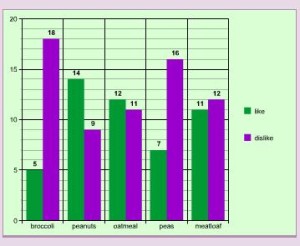Green Eggs and Ham by Dr. Suess, a perennial favorite, was written on a bet with Bennet Cerf that Suess couldn’t write a book with only 50 words. Obviously, he could. For small children, learning the 50 words in Green Eggs and Ham is a worthwhile accomplishment.
Here are the words:
a, am, and, anywhere, are, be, boat, box, car, could, dark, do, eat, eggs, fox, goat, good, green, ham, here, house, I, if, in, let, like, may, me, mouse, not, on, or, rain, Sam, say, see, so, thank, that, the, them, there, they, train, tree, try, will, with, would, you
Put each of the words on a word card. Hold them up and read them together each morning that you’re working on the book, or on your Dr. Seuss author study, or on Read Across America lessons.
More things to do with word cards:
- alphabetize them
- sort them into rhyming pairs and those with no rhymes
- sort them from shortest to longest
- copy them so that each student has a set
- illustrate them
- combine them into as many sentences as possible
It’s traditional to serve some green eggs and ham on Read Across America Day, and here’s a collection of recipes from the simplest to the most complex, with some exotic options:
Eating green eggs and ham, whether you green it up with food coloring or pesto, gives you a chance to examine the most obvious point in the book: the willingness or unwillingness to try new things.
The narrator doesn’t want to try green eggs and ham, so Sam I Am, the green eggs and ham evangelist, offers them every more insistently in more and more situations. At last, the narrator tries them and likes them.
Have students draw and label foods they don’t like. Make a class chart of the foods showing how many students chose each food as a disliked food. Then have students raise hands for “like” or “dislike” of each food on the chart and fill in the numbers. Here’s our graph, made at Create a Graph; you can make yours on the board, in a graphing pocket chart, or on paper, too.

If you’re serving green eggs and ham, include it in the chart as well.
Having charted the class’s immediate reactions, try an experiment. Have tasters sit in a box and try again. Does it make a difference? Chart the responses to this question to get a sense of how experiments can be done. You’ll probably find that 100% of the subjects like or dislike foods equally in and out of a box.
Return to the book and discuss which factors in the book might make a difference to the taste of the green eggs and ham. You can make a graph with these as well.
More things to graph:
- How many students have eaten things in a tree?
- How many have eaten things on a boat?
- How many would give in if someone asked them as many times as Sam I Am did?
You can’t leave a lesson like this without discussing the difference between being open to new experiences and being talked into unwise decisions. Brainstorm a list of factors that might tell students it would be unwise to take a chance on a new experience:
- Is it against the rules?
- Could you or someone else get hurt?
- Would your parents allow you to do it?
Online resources:
- Grammarman PDF resource pack has words and pictures plus directions for games using them.
- ReadWriteThink has a lesson making a book about all the places kids can read.
- Seussville has some activities for Green Eggs and Ham.





